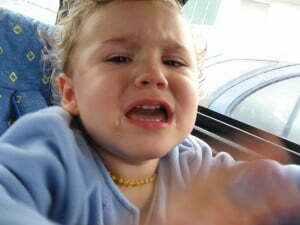back to home
Crying – about the present or the past?
One of the main things about Aware Parenting and other similar parenting paradigms, such as those by Patty Wipfler and Lawrence Cohen, is a different way of looking at crying.
Often crying is seen at face value – a child cries when put in his car seat, or when picked up. This is interpreted as “he doesn’t like the car seat,” or “he doesn’t like to be cuddled.” But what these other parenting options suggest is that crying in these types of situations can be a way of healing from past pain. This beholds the parent to work out when the child is crying to say that his needs are not being met in the present moment, and when the child is crying to release his hurt feelings related to past incidents.
This is the key to Aware Parenting – distinguishing feelings related to present needs – such as hunger, closeness, support, choice, play, respect, etc. – and those related to the past. How on earth can this be done?
Distinguishing between the two is to some extent an experimental method. Day by day, a parent can discover what their child is expressing by watching his responses.
For example, I have noticed over the past few weeks how my 6-year-old daughter often cries when we go for a walk in the field out the back of our house. We always go with my 18-month-old son. Nearly every time she will express frustration over something that happens – usually over what method of transport we use (stroller/bike/walking/play mower) ….. After a week or two of this I was feeling frustrated, until I began to realise there was a pattern. I started to think that perhaps it wasn’t so much about her need for choice not being met (I always tried to find a way for them both to get their needs met) but that the wide open space of the field (away from home), the choice of vehicles, and the presence of her little brother, gave her the perfect setting for her to express feelings about sharing me with him. Once I realised what was going on, I felt calm instead of frustrated. Instead of wanting ease and harmony, I celebrated that she was finding a way to do some healing.
Another example … when my daughter was between 12 and 18 months old, she would protest and cry whenever I tried to put shoes or socks on her. For months I would try and then stop when she cried, and so for that period she did not wear shoes or socks at all. But eventually I began to think that perhaps her protests and crying were to do with feelings that were being triggered by me putting her shoes on – I imagined it might be to do with the trauma of the heel prick test at 3 days old – when the nurse pricked her heel several times …as well as other feelings related to being independent and making choices.
When you have tried meeting your child’s need in many different ways, and the crying still occurs, that might be an indication that some healing is ready to happen.
Telling the difference is not always straightforward, but knowing that crying and protesting may be about what it seems to be about, or may not, gives us parents another option to help our children. I’m still loving learning to tell the difference!
Edited 2008
